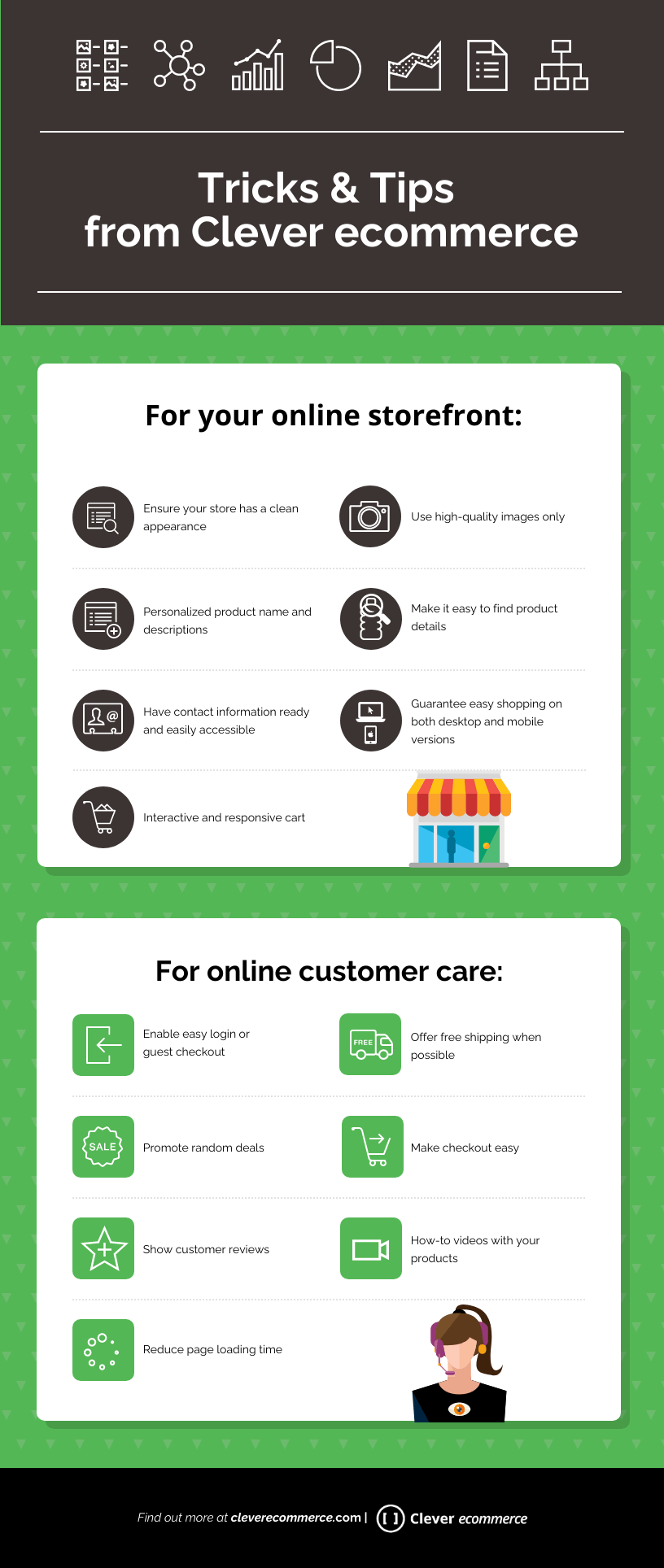How to Start Selling Online in 2024
Happy New Year, Small Business Owners! Every small business is probably trying to figure out how to start selling online in 2024. After the whirlwind of 2020 and the economic and professional disturbances many family-owned businesses went through or are still facing while looking forward into the new year, it should be a priority to get online. The best online shopping storefronts don’t have to be the most complex nor do they have to be top dollar – they just need to get the job done.
Well, how do people start an online store? Luckily, you don’t need to be a Search Engine Optimization (SEO) expert or have a PhD in Computer Science, you just need to be a little patience and follow some standard procedures.
Sorting Things Out
These are the steps you should follow when getting your store’s products online:
- Choose an eCommerce platform that suits your needs (to be explained more in depth later)
- Get traffic from places where your customers are
- Allow for conversions
- Make loyal customers
eCommerce Platforms
The first step when starting an online store is understanding what eCommerce platform fits your business’s profile – try looking around for a competitor’s online store to see what platform their products are available online. Don’t choose another platform “just because” as your niche audience (or, “most loyal customers”) may be more active or have a larger presence on a specific platform.
Three big platforms include PrestaShop, Shopify, and WooCommerce. Each of these are a great choice, but there are slight differences between the three. Let’s take a closer look at what each offers.
PrestaShop
PrestaShop’s greatest feature is its potential to be personalized to your needs. With a large array of modules you can add on to your store, you can easily customize the interface to match your brand’s goals. PrestaShop is home to a large Spanish-speaking community if you are interested in said market. The platform does not charge commission and is SEO friendly for future changes.
Shopify
Shopify’s claim to fame is its instant shop creation – saving you hours of work. Regardless of the payment plan you choose (there are three), you have access to a huge app catalog that can help improve your stores (and even sales). Shopify is offered in different currencies which gives you a wider customer base right off the bat.
WooCommerce
WooCommerce offers beautiful theme templates for your store so you can easily customize the look and feel of your store and even brand throughout the online shop’s design. The platform does not offer a payment plan; it only allows for hosting. There’s a great selection of plugins that can help your store grow along the way. Many users rave about the easy-to-use interface and the large community that surrounds WooCommerce.
Getting Traffic
There are several traffic types and it depends heavily on your business size and budget as to which one will work best for you.
Paid Traffic
This type of traffic comes from ads running on Facebook, Google, Instagram, or Microsoft. When paying for ads, you should always try out new acquisition channels to test the waters. You may have better results with one over the other. We strongly recommend you to try the new Performance Max campaigns from Google and Microsoft.
Organic Traffic
Organic traffic is when people are directly searching for your business by name in the search bar on a search engine. Unfortunately, most small businesses do not survive solely on this kind of traffic.
Referral Traffic
People who find your online store through links on other websites are referral traffic. Examples include guest posts and influencer marketing techniques. The easiest way to go about referral traffic is by commenting in forums and on other blog posts related to your business.
Direct Traffic
Essentially this is when people go right to your website. Which means good news! Your brand has a large presence and is well-known. If your URL is easy to remember, then you’re one step closer to getting your Direct Traffic trophy.
Social Traffic
Yes, “you guys” – this is the traffic coming from your social media. You should probably keep an eye on trending hashtags so your products and/or services get more visibility.

Tricks & Tips from Clever eCommerce for your online storefront
- Ensure your store has a clean appearance
- Use high-quality images only
- Personalized product name and descriptions
- Make it easy to find product details
- Have contact information ready and easily accessible
- Guarantee easy shopping on both desktop and mobile versions
- Interactive and responsive cart
Tricks & Tips from Clever eCommerce for online customer care
- Enable easy login or guest checkout
- Offer free shipping when possible
- Promote random deals
- Make checkout easy
- Show customer reviews
- How-to videos with your products
- Reduce page loading time
Keeping customers happy
- Send special offers via email newsletters
- Gift birthday discounts
- Have a strong connection with customers on social media
- Notify customers about random sales throughout the year
- Take advantage of negative reviews and/or customer experiences – they can be the most impactful situations to make a loyal customer
Clever eCommerce, a software company founded in 2012, focuses on automating Google Ads campaigns in a fast, simple, and effective way. It’s a proud Premier Google Partner while proudly both PrestaShop and Shopify Partners. Over 100,000 stores have enjoyed easy and efficient campaigns with the help of Clever eCommerce.





Nice